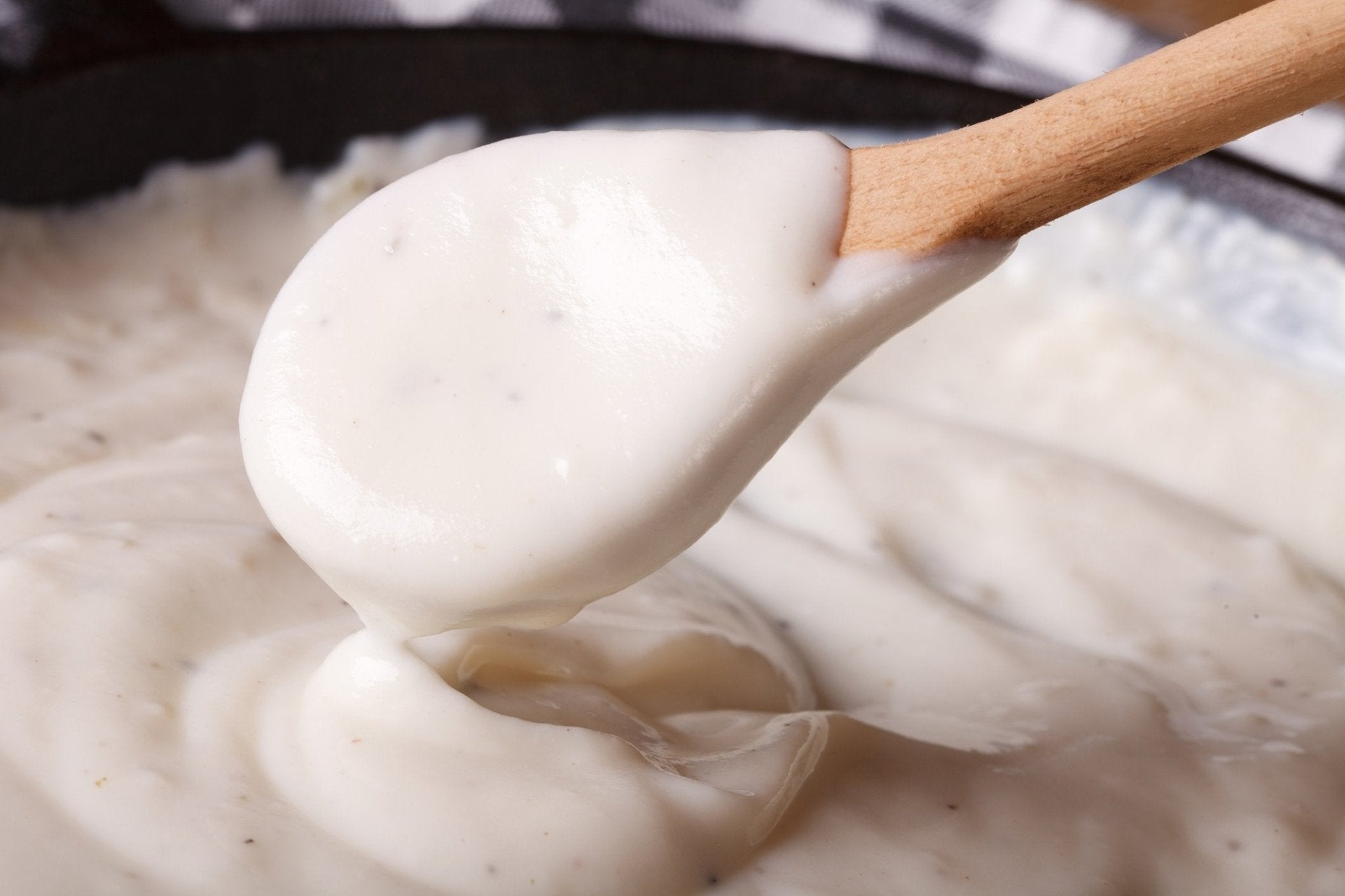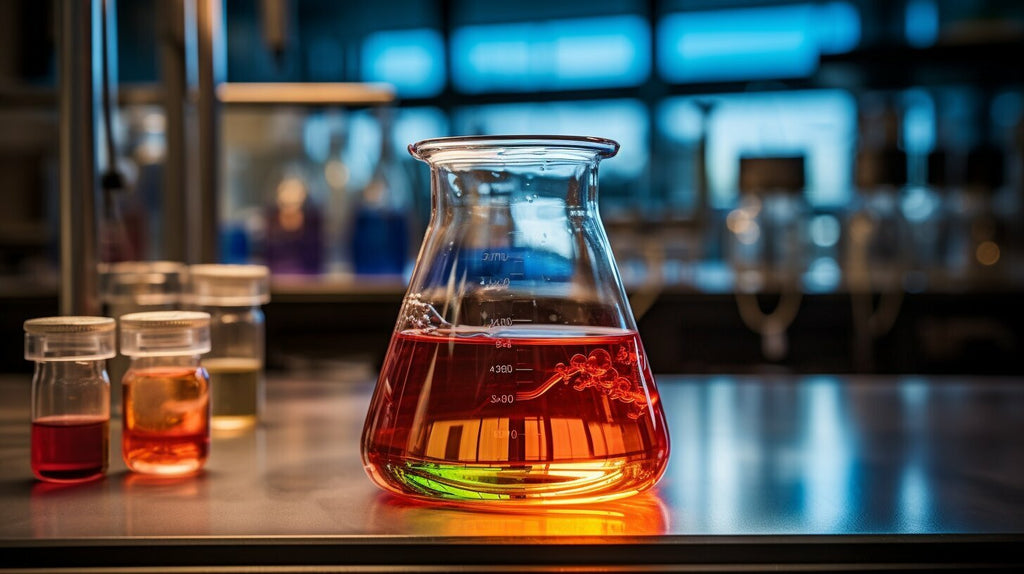Trending searches

Exploring the Different Types of Food Thickeners and Thickening Agents
SUBSCRIBE TO OUR BLOG
Promotions, new products, and recipes.
Have you ever wondered what gives your favorite sauces a velvety texture or makes the soups you love so deliciously creamy? Well, it’s thanks to those often overlooked players in the culinary world, food thickeners. In this post, we’re going to have a look at different types of food thickening agents and their practical applications as well as helpful tips for mastering an ideal consistency with these remarkable ingredients.
Key Takeaways
-
Thicken up your dishes with starch-based thickeners, gums, and gelling agents.
-
Master mixing methods and cooking techniques for perfect results.
-
Check out plant-based alternatives like tapioca starch and arrowroot for gluten/animal product-free options.
Understanding Food Thickeners

A bowl of hot soup thickened with a hydrocolloid.
Food thickeners are employed to improve the texture and consistency of a range of foods, such as soups, sauces, cold dishes, and desserts. Starch-based thickening ingredients like potato starch or cornstarch tend to be favored when creating thicker sauces while gums including xanthan gum plus gelling agents for instance agar-agar give extra thickness in several food recipes apart from providing stabilizing effects. There is an extensive selection available with regard to both categories so that any sort of dietary preferences can be addressed easily.
Starch-Based Thickeners
Starch-based thickening agents, such as cornstarch and potato starch are popularly used in food recipes to create the desired thickness in sauces and gravies. This is done through gelatinization. A process where heat breaks down intermolecular bonds of these starches which then allows hydrogen bonding sites to combine with water molecules.
Both types of food starches—cornstarch and potato starch—can be utilized for various sweet or savory dishes. While cornstarch can make fruit pie fillings more jelly-like, adding potato starch will thicken soups into a creamy consistency. An additional liquid thickening agent that’s often employed is roux made up of fat mixed with flour, this also works great when it comes to making different meals thicker!
Gums and Gelling Agents
When it comes to imparting the right consistency in recipes, thickening agents and gelling agents play a vital role. An example of such an additive is xanthan gum. This plant-based product helps create stable sauces and gravies as well as adding body to yogurt, ice cream, sherbet, or frozen desserts. It’s also worth noting that agar agar - derived from sea vegetables – can make for a great vegan replacement when wanting something like gelatin which is used often for marshmallows and panna cotta but contains animal collagen.
Try Xanthan Gum, a Popular Thickener
Pick up a packet of Cape Crystal Brand Xanthan Gum. You will be glad you tried it.
Thickening Techniques for Perfect Results

Gravy thickened by agar agar, a hydrocolloid.
Achieving the right texture in your recipes relies on correct mixing methods and cooking processes when using thickening agents. Making a slurry or roux, for instance, can stop lumps from forming and guarantee an even consistency. Necessary techniques like simmering as well as whisking are essential to activate any thickeners’ dense properties which will bring forth better outcomes with meals such as sauces or puddings. Nailing these skills is going to help you unlock the power of each agent so that all culinary masterpieces reach their highest potential!
Mixing Methods
Creating the right consistency of a mixture involves knowing how to properly make a slurry or roux. These two mixing methods are key for avoiding lumps and achieving an even thickness.
To achieve this with a slurry, first, whisk together starch in cold liquid until well blended. Then gradually incorporate it into hot simmering liquid while continually stirring until there is no traceable taste from the flour left behind.
By following these steps precisely, you will have created an evenly thickened mixture devoid of any unappetizing chunks.
Roux too makes for a great thickening agent by combining fat and flour in one mix – heat up your fat before slowly adding some flour till totally combined - forming what should be seen as a smooth paste– thereafter little by little add heated-up liquid. All while continuously whisking so that the result comes without any visible lumpy bits whatsoever.
Cooking Techniques
Different techniques of cooking can bring out the ability of particular ingredients to thicken a dish. For instance, simmering is an ideal way that enable starches in thickening agents to draw moisture and enlarge, growing their capability for thickness. Whisking helps disperse the substance evenly throughout a liquid which avoids clumps and produces a smooth texture.
Combining suitable mixing strategies with efficient cookery methods will achieve your desired level of consistency when preparing both hot and cold foods. Something you may be proud to show off around family members and acquaintances alike.
Gluten-Free and Vegan Thickening Options

Tea thickened with xanthan gum, a hydrocolloid.
Those with dietary restrictions now have two great options for thickening food: tapioca starch and arrowroot. Both are 100 percent vegan, as well as naturally gluten-free. Thus enabling a wide range of people to enjoy tasty dishes without the worry of ingredients like wheat or other animal products. Derived from the cassava plant, Tapioca Starch is perfect both in cooking and baking applications while Arrowroot works exceptionally well when used alongside acidic components within recipes. No matter what kind of dish one may be preparing everyone can savor their delicious creation knowing that they don’t have to compromise on taste!
Tapioca Starch
Tapioca starch is a gluten-free powder derived from cassava and can be used in various culinary tasks. It provides an alternative to wheat flour when making crusts for bread, creating crunchy textures with its special properties. Also, it serves as an excellent thickening agent for soups, stews, and sauces instead of tapioca flour - good news if you’re following a no-gluten diet! This white powder yields delicious baked goods which are both crispy on the outside and chewy inside. Unlike potato or arrowroot starches that produce less satisfying results.
Arrowroot
Arrowroot, a white and flavorless powder made from the rhizomes of the Maranta arundinacea plant is highly popular for its gluten-free, vegan, grain-free, and Paleo-friendly qualities. This ingredient works well as a thickening agent in sauces, soups, and other dishes due to its ability to handle acidic ingredients such as tomatoes or citrus fruits without curdling. For best results, it’s important that arrowroot should be mixed with cold liquid before adding it into hot mixtures so that lumps don’t form upon blending.
Beverage Thickeners: Enhancing Texture and Consistency in Drinks

Orange juice thickened with xanthan gum.
When it comes to people with swallowing difficulties, beverage thickeners are essential for creating a suitable texture and consistency of drinks that can be consumed without compromising on flavor. Beverage thickening agents can add the desired thickness needed in beverages such as iced tea, cold juice, coffee, milkshakes, and smoothies alike. Various liquid-based thickeners exist. It’s great how these alternatives give you many choices when it comes to achieving the optimum drinking experience!
Tips for Storing and Using Thickening Agents

A jars of commonly used hydrocolloid thickening agents.
Adhering to correct storage and application methods for thickening agents is essential in order to attain the desired results, avoid wastage, and make delectable dishes with ideal texture. Keeping these guidelines and tips in mind when storing or using your thickeners will guarantee that they remain fresh while giving you amazing outcomes every time.
Storage Guidelines
It is important to store thickening agents properly in order for them to remain fresh and ready. To ensure this, they should be stored in airtight containers and placed away from direct sunlight or heat sources, like a cool dry place. If you don’t need immediate use of these items, placing them inside the refrigerator will Increase their shelf life duration. Please make sure that all instructions provided by either the manufacturer or healthcare professional are followed precisely as each type of agent may have its own set of storage requirements which must be adhered to.
Usage Tips
Using thickening agents properly is essential for desired results in cooking. To achieve the right texture, these measures should be taken: Start by measuring out how much of the agent you need to use according to what’s required from your recipe. When adding it gradually into liquid or mixtures stir constantly to ensure there won’t be any clumps formed. Mix a bit of cold liquid with thickeners first so that they will combine smoothly and dissolve when incorporated together with hot substances If needed. Then adjust accordingly - more added yields thicker textures while lesser quantity leads towards thinner ones – only this way can one reach perfect consistency in their culinary creations. Adopting all these steps enables great utilization of such ingredients thus ensuring luscious dishes everyone would enjoy.
Commonly Asked Questions

Thickening sauce using agar agar a hydrocolloid.
If you’re looking to learn more about food thickeners and the various ways they can be used, then this blog post is perfect for you. We have answered all of your burning questions on what types are available, how best to use them, and techniques for getting that ideal consistency each time.
Whether you work in a professional kitchen or simply love cooking at home, our aim is to give any budding chef some useful insight into using food thickeners effectively. There’s no doubt that these tips under your belt will help take those meals up a notch!
We understand if there may still be lingering queries when it comes to understanding food thickeners better so please don’t hesitate to reach out if we haven’t covered something specifically here, good luck!
Summary
Food thickeners have an essential role in making a wide variety of meals, from sauces and soups to gravies and desserts, come alive with their delectable texture. Knowing the different types of thickeners as well as how to mix them properly while cooking is key in creating mouthwatering dishes that can please any palate or special diet restriction. Henceforth don’t hesitate to add more zest into your cuisine: you won’t regret it!
Frequently Asked Questions
What is the use of thickener?
Thickeners are added to both foods and liquids in order to give them a higher viscosity without altering the flavor. Such thickeners may be used by those with swallowing difficulties (dysphagia) as they can help minimize aspiration, thus lessening choking risks. Thickeners have other applications too. For instance, paints, inks, explosives, and cosmetics all use these substances as well.
What is a thickener for swallowing problems?
Xanthan gum is a thickening agent specifically designed to help those with swallowing difficulties, such as dysphagia. It’s the only thickening agent that can be frozen or heated and maintain its viscosity, creating a thicker consistency that will travel more slowly down the throat for easier control.
What is the most effective thickener?
Potato starch is an excellent thickener for liquids due to its long molecules which quickly interlock and create a thicker consistency.
What is thickener made of?
Thickeners are largely composed of polysaccharides and proteins, including xanthan gum, corn starch, CMC (carboxymethylcellulose), and pectin. These ingredients combined result in a product with the desired consistency for various types of food items.
What does thick water taste like?
Thickened water has the same taste as regular tap or bottled water, but its texture is more akin to aloe vera gel. It’s easy to pour and swallow, yet has a more chunky mouthfeel that you’ll definitely notice.


|
About the Author Ed is the founder of Cape Crystal Brands, editor of the Beginner’s Guide to Hydrocolloids, and a passionate advocate for making food science accessible to all. Discover premium ingredients, expert resources, and free formulation tools at capecrystalbrands.com/tools. — Ed |
- Choosing a selection results in a full page refresh.




